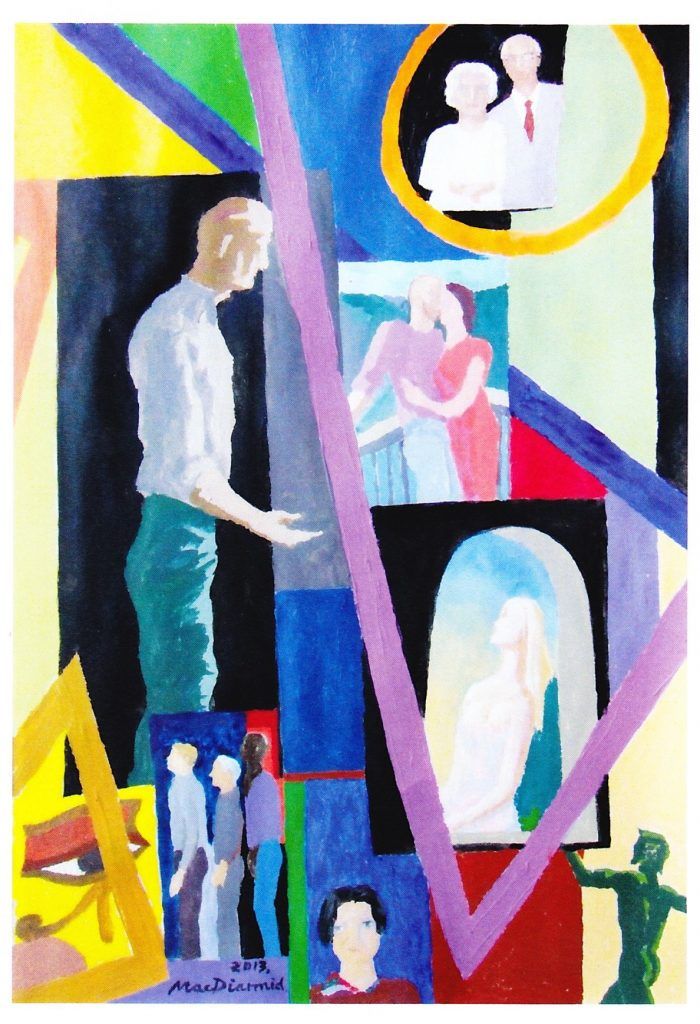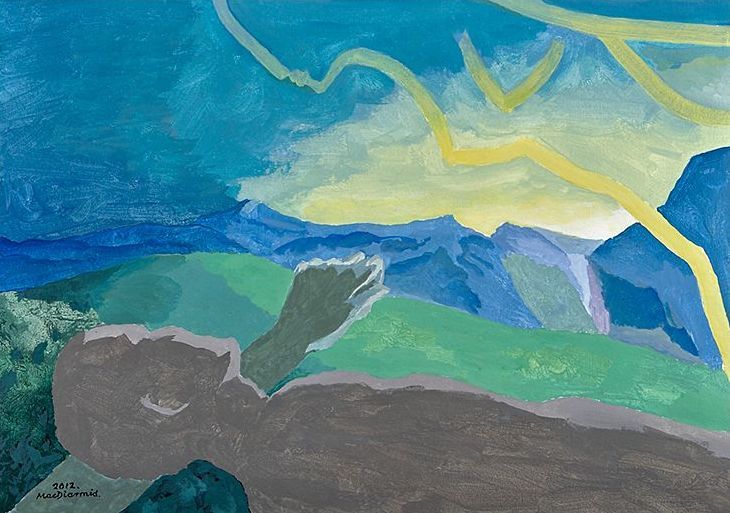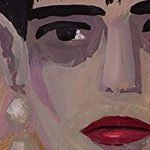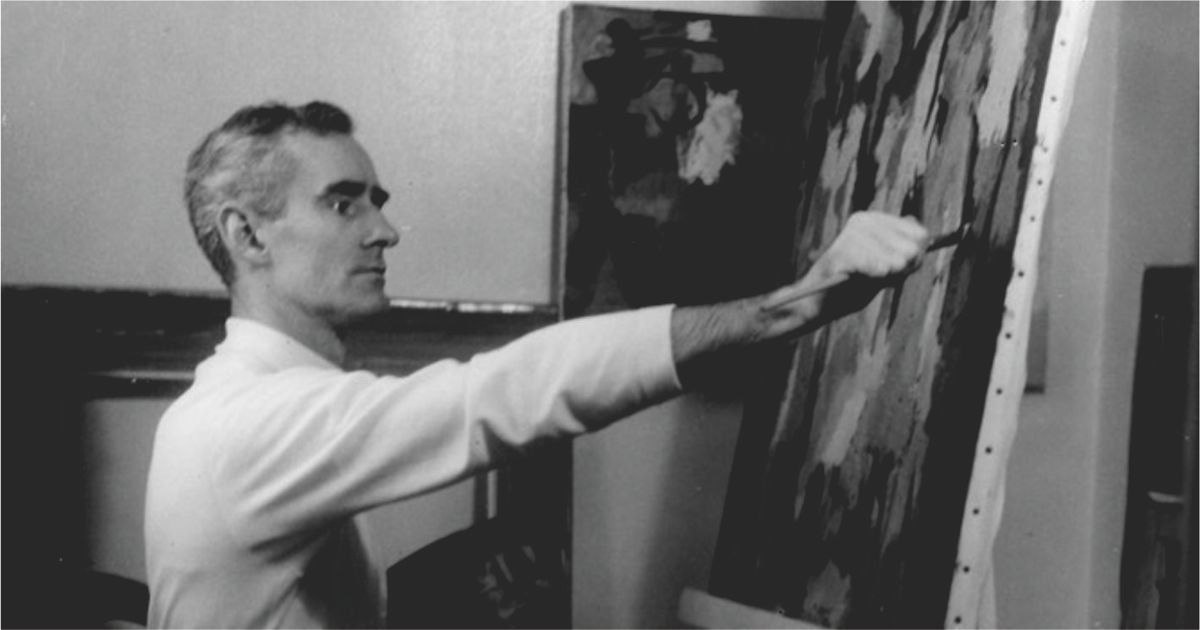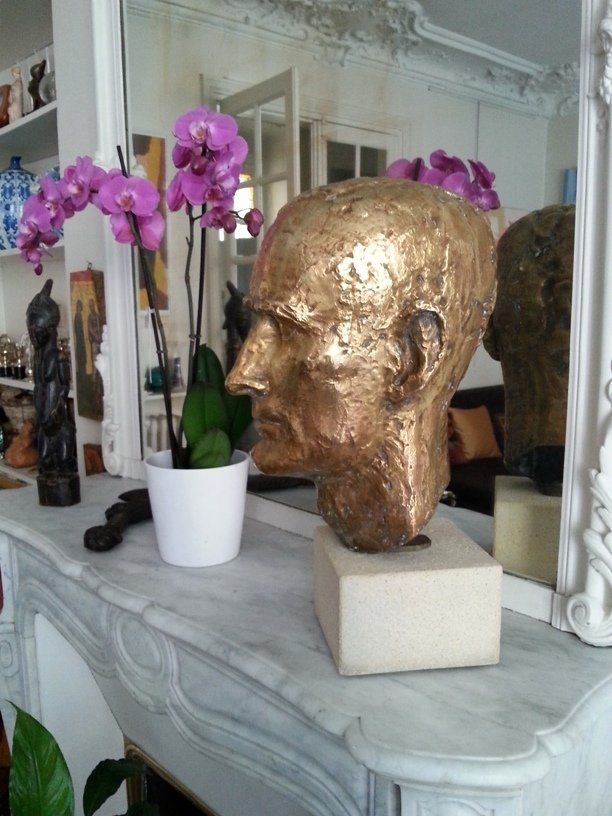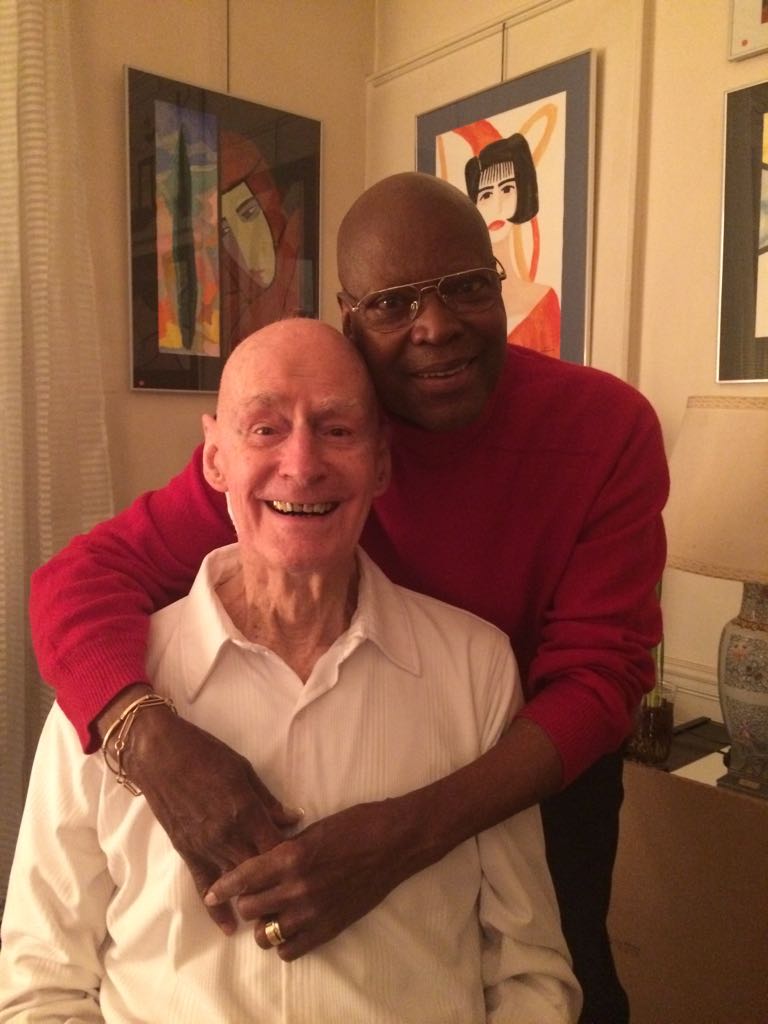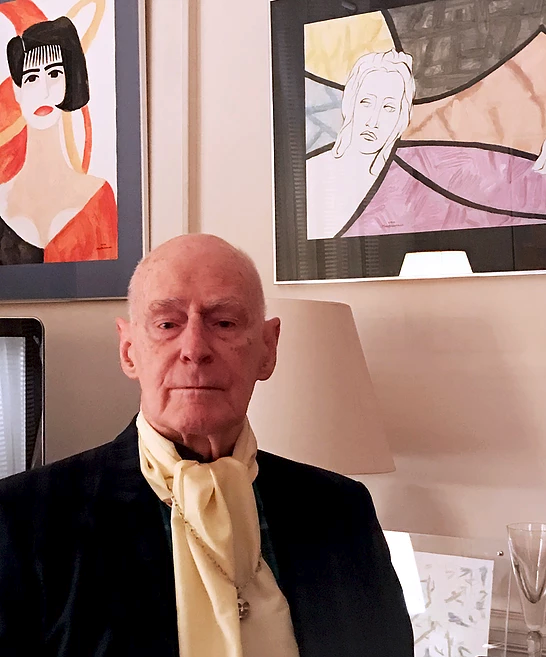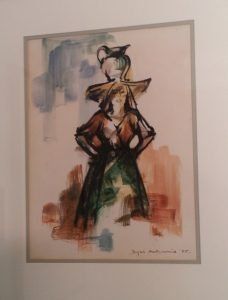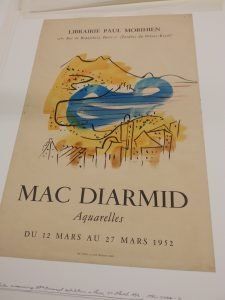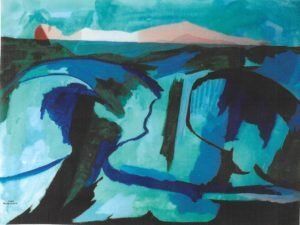Retrospective Cell Formation (2013) is the smallest narrative picture Douglas MacDiarmid has ever painted – a book-sized 30 x 21cm. He did it in a sketchbook used when working at specifications for paintings.
“I swear NEVER again will I try to work to such detail into small proportions,” he said at the time. “It has involved practically minute application, and wreaked havoc with my eyes.”
Douglas describes the tiny painting as a “sort of life map and probably best seen as a picture with no obligation to get bogged down in the geographical niceties.” It is a gathering of significant people and familiar classical symbols of other paintings. MacDiarmid stands as the central image, with a cameo of his late parents Mary and Gordon top right.
The couple below represent the current generation, a favourite cousin Charlotte MacDiarmid and her husband Ben, both of whom Douglas got to know well when they were studying in Paris.
Then, the three most significant men in his life – New Zealand composer Douglas Lilburn, French high fashion designer Frédéric Castet, the head of his French ‘family’, and Patrick, MacDiarmid’s beloved partner of more than 50 years, who came to France from the third world French colony of Guadeloupe in search of a better life.
Completing these significant influences is Douglas’ dear friend and fellow New Zealand painter Piera McArthur. Their close creative bond has covered decades and continents since they first met in Paris in the mid-1970s early in she and her husband John’s distinguished diplomatic career.
The classical world has been an abiding presence in Douglas’ life and work. First, we have the penetrating eye of Horus, the sky god, ancient Egyptian symbol of protection, royal power and good health. The universal female form often appears in his paintings – hauntingly reflective, graceful, shapely. And for good measure, the dancing faun familiar from Greek sculpture. Commonly known as Pan, the mythological half human–half goat was a manifestation of forest and animal spirits that could help or hinder humans at whim.
This marvellous array of figures is offset by bold coloured lines and shapes serving as rhythmic accessories. “The rhythm of a work is very important to me”, he observes. It is the essence of Douglas’ vision as an ‘expressionist’ painter.
(Private collection, Wellington)
Image: Retrospective Cell Formation (2013) by Douglas MacDiarmid (acrylic, 30 x 23cm)

